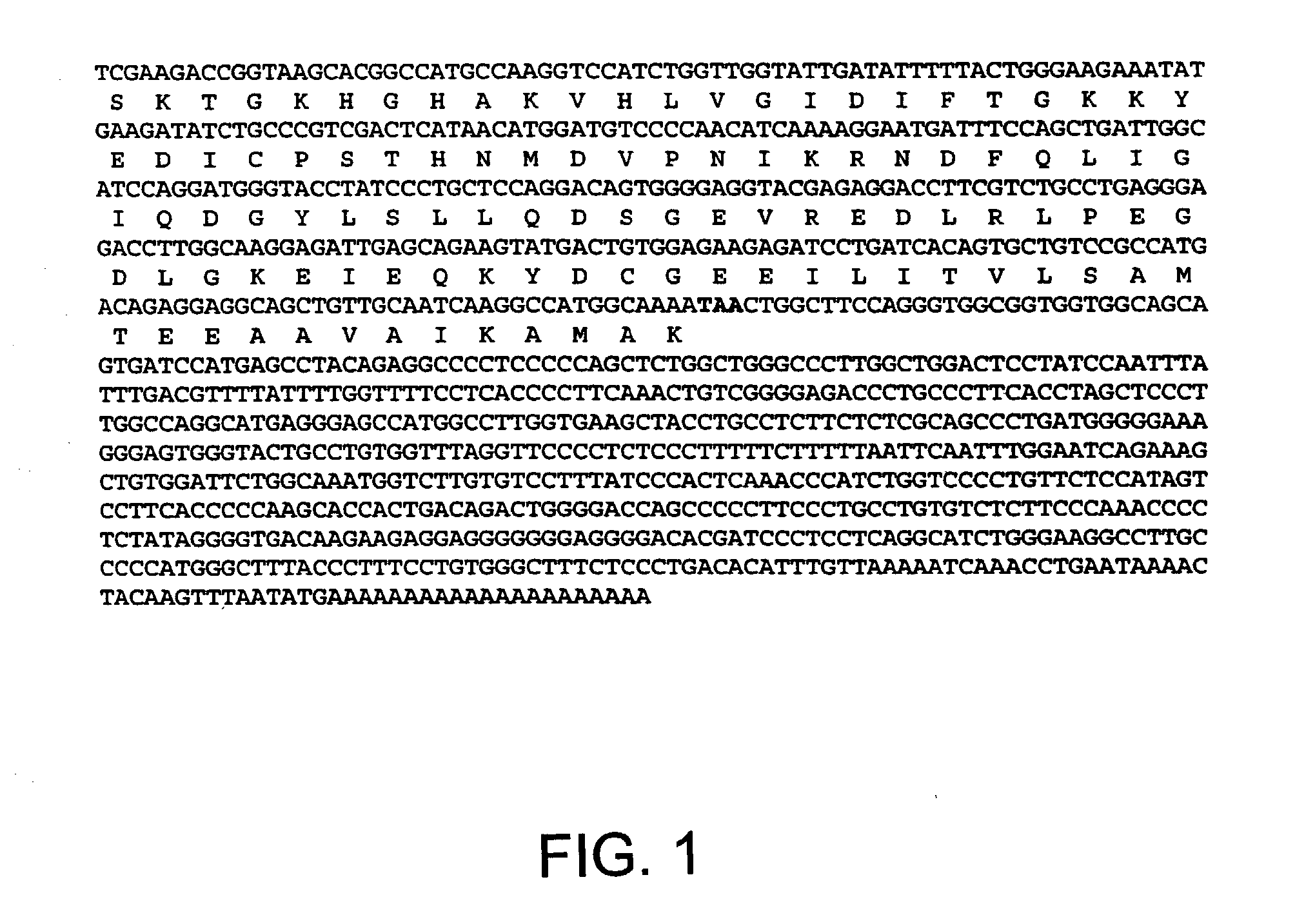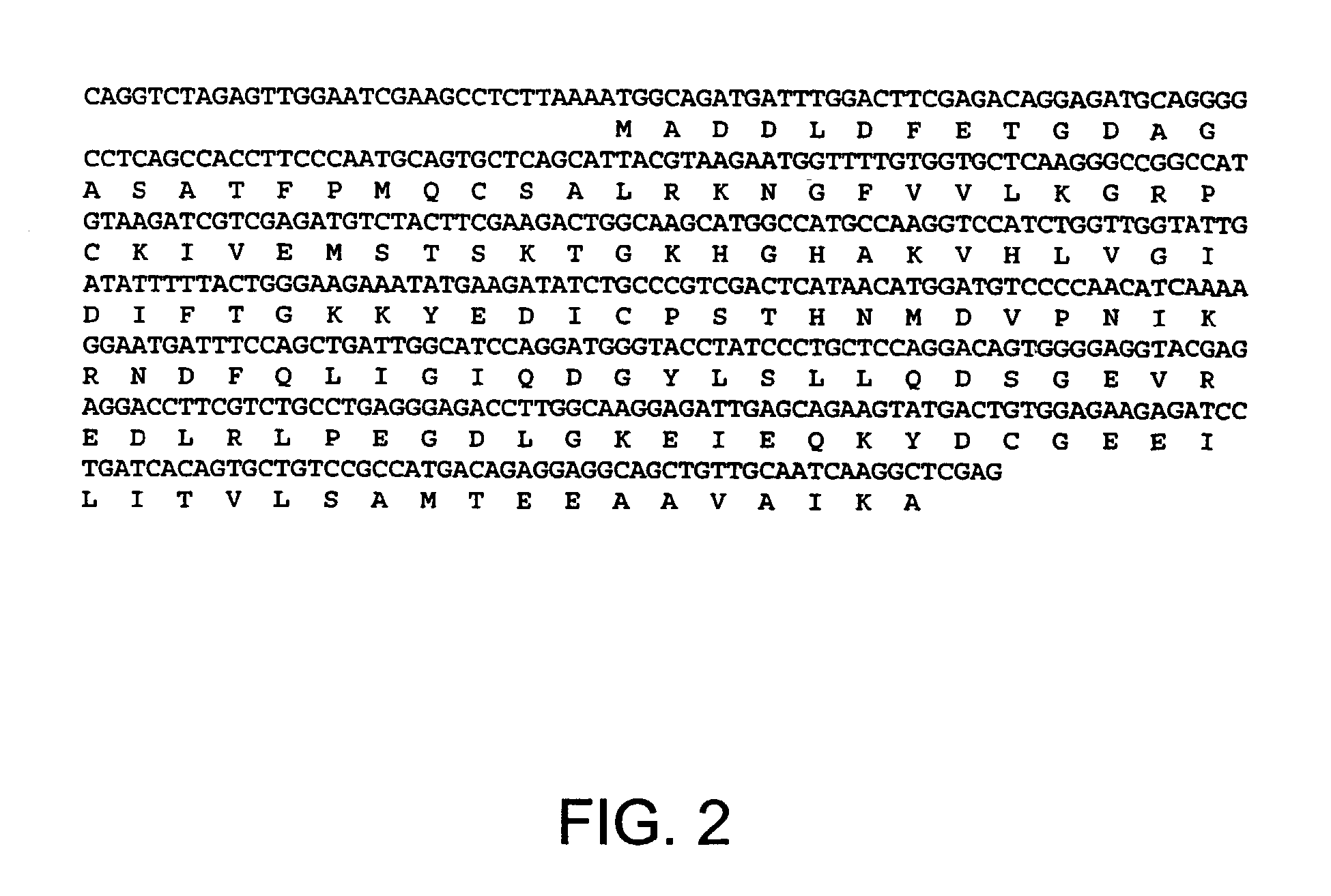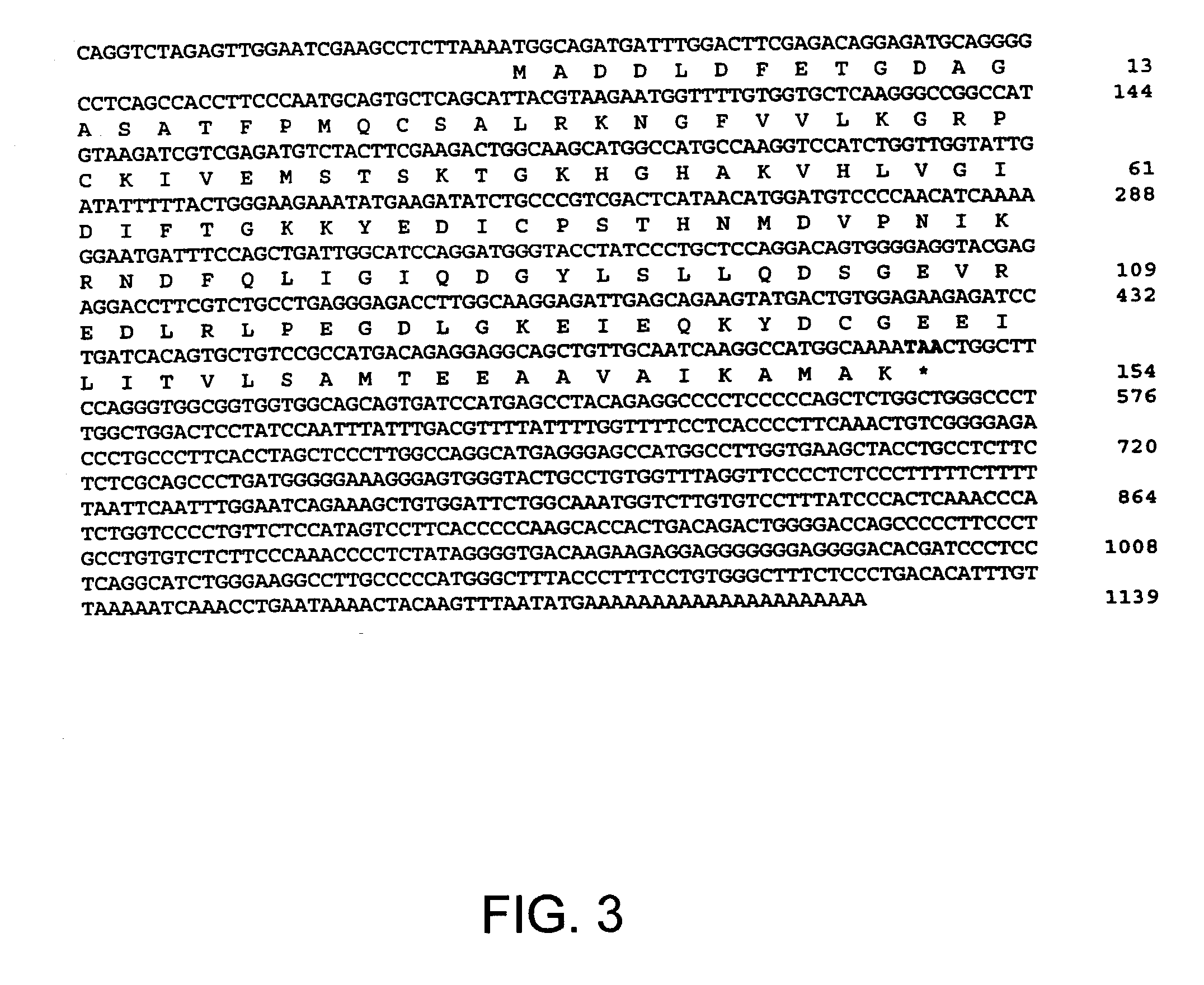Nucleic acids, polypeptides, and methods for modulating apoptosis
a technology of apoptosis and nucleic acids, applied in the direction of oxidoreductases, hydrolases, dna/rna fragmentation, etc., can solve the problems of cell vulnerability to further mutation, small decrease in total protein synthesis, and inability of cells to carry out further mutations
- Summary
- Abstract
- Description
- Claims
- Application Information
AI Technical Summary
Benefits of technology
Problems solved by technology
Method used
Image
Examples
example 1
[0131] The present example demonstrates isolation and characterization of a full-length cDNA encoding a rat eIF-5A nucleic acid exhibiting apoptosis-specific expression.
[0132] Superovulation and Induction of Apoptosis in Rat Corpus Luteum
[0133] Immature (21-30 day old) female rats were superovulated by subcutaneous injection with 50 IU of PMSG (Pregant Mare Serum Gonadotropin) and 60 to 65 hours later with 50 IU of HCG (Human Chorionic Gonadotropin). Seven days after the treatment with HCG, corpus luteum apoptosis was induced by subcutaneous injection with 500 mg of PGF-2.alpha.. Rats were sacrificed at various times (e.g., 1, 8, and 24 hours) after PGF-2.alpha. treatment, and the corpora lutea were removed and placed in liquid nitrogen. Control corpus luteum tissue was obtained by sacrificing rats immediately before PGF-2.alpha. treatment.
[0134] Dispersion of Rat Ovarian Corpus Luteum Cells
[0135] Six to nine days after superovulation, rats were treated by multisite subcutaneous inj...
example 2
[0169] The present example demonstrates modulation of apoptosis with apoptosis-specific eIF-5A and DHS.
[0170] Culturing of COS-7 Cells and Isolation of RNA
[0171] COS-7, an African green monkey kidney fibroblast-like cell line transformed with a mutant of SV40 that codes for wild-type T antigen, was used for all transfection-based experiments. COS-7 cells were cultured in Dulbecco's Modified Eagle's medium (DMEM) with 0.584 grams per liter of L-glutamine, 4.5 g of glucose per liter, and 0.37% sodium bicarbonate. The culture media was supplemented with 10% fetal bovine serum (FBS) and 100 units of penicillin / streptomycin. The cells were grown at 37.degree. C. in a humidified environment of 5% CO.sub.2 and 95% air. The cells were subcultured every 3 to 4 days by detaching the adherent cells with a solution of 0.25% trypsin and 1 mM EDTA. The detached cells were dispensed at a split ratio of 1:10 in a new culture dish with fresh media.
[0172] COS-7 cells to be used for isolation of RNA w...
example 3
[0188] The present example demonstrates modulation of apoptosis with apoptosis-specific eIF-5A and DHS.
[0189] Using the general procedures and methods described in the previous examples, FIG. 23 is a flow chart illustrating the procedure for transient transfection of COS-7 cells, in which cells in serum-free medium were incubated in plasmid DNA in lipofectAMINE for 4 hours, serum was added, and the cells were incubated for a further 40 hours. The cells were then either incubated in regular medium containing serum for a further 48 hours before analysis (i.e. no further treatment), deprived of serum for 48 hours to induce apoptosis before analysis, or treated with actinomycin D for 48 hours to induce apoptosis before analysis.
[0190] FIG. 22 is a Western blot illustrating transient expression of foreign proteins in COS-7 cells following transfection with pHM6. Protein was isolated from COS-7 cells 48 hours after either mock transfection, or transfection with pHM6-LacZ, pHM6-Antisense 3...
PUM
| Property | Measurement | Unit |
|---|---|---|
| Tm | aaaaa | aaaaa |
| temperature | aaaaa | aaaaa |
| temperature | aaaaa | aaaaa |
Abstract
Description
Claims
Application Information
 Login to View More
Login to View More - R&D
- Intellectual Property
- Life Sciences
- Materials
- Tech Scout
- Unparalleled Data Quality
- Higher Quality Content
- 60% Fewer Hallucinations
Browse by: Latest US Patents, China's latest patents, Technical Efficacy Thesaurus, Application Domain, Technology Topic, Popular Technical Reports.
© 2025 PatSnap. All rights reserved.Legal|Privacy policy|Modern Slavery Act Transparency Statement|Sitemap|About US| Contact US: help@patsnap.com



